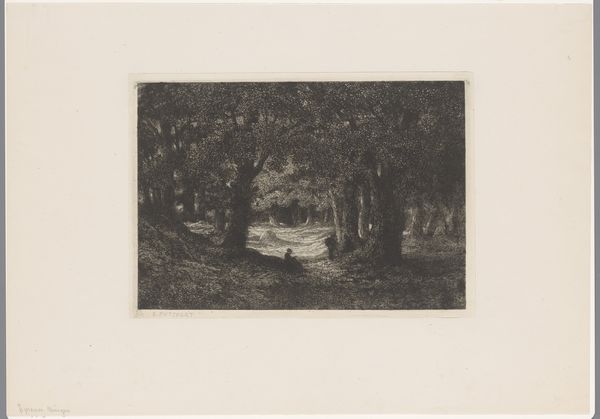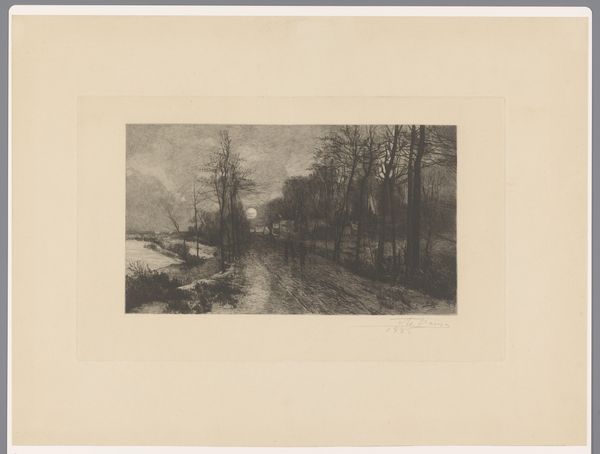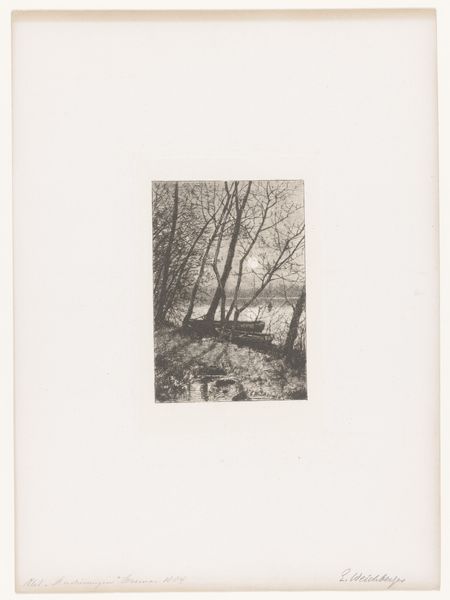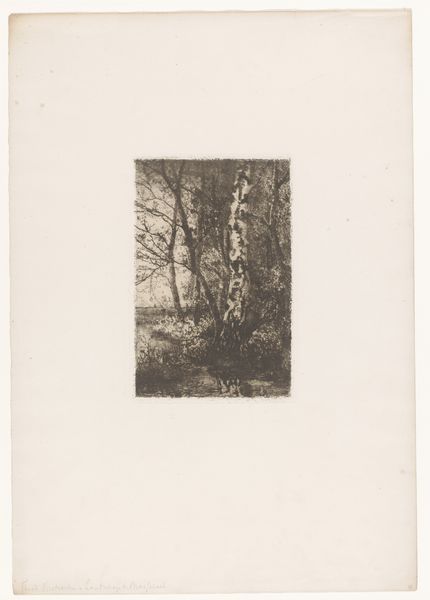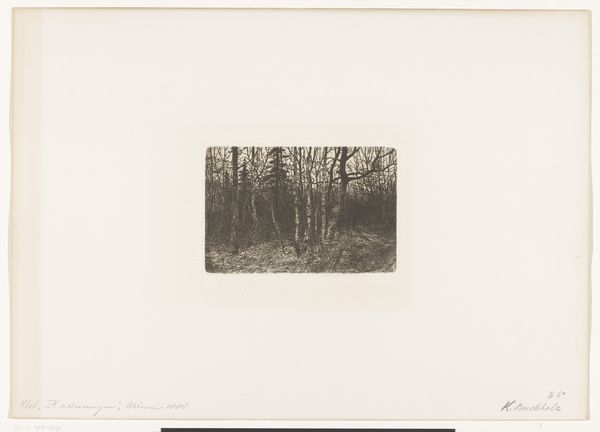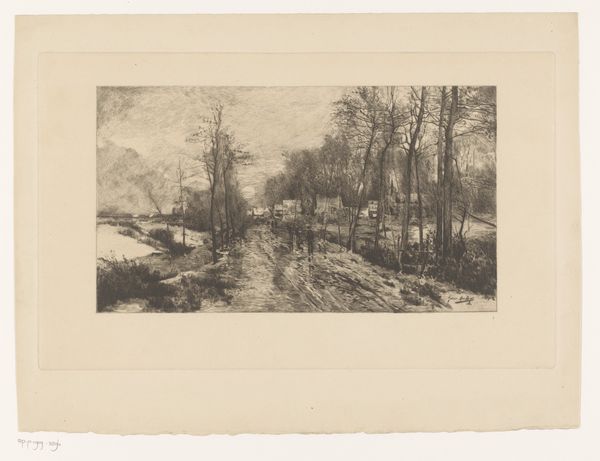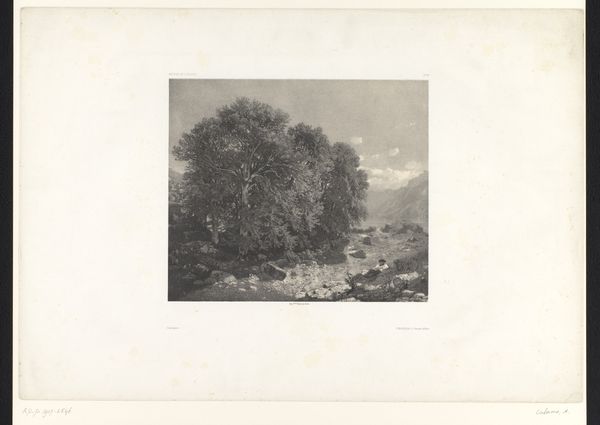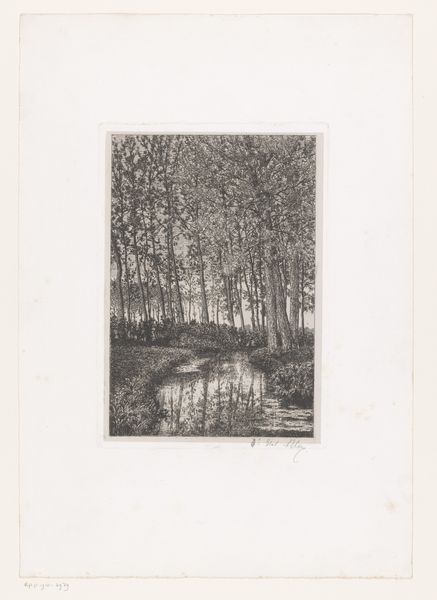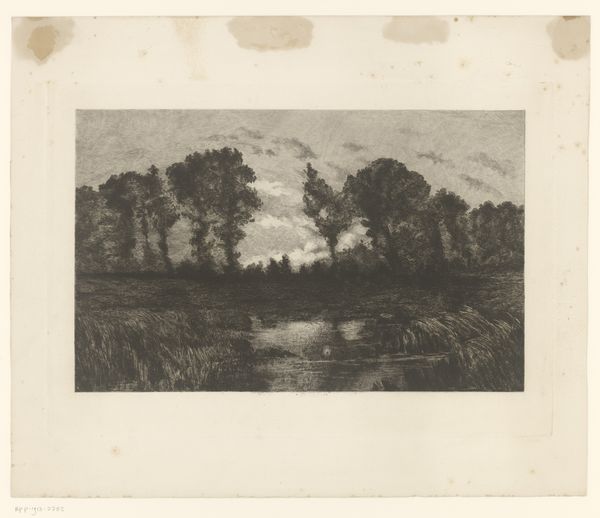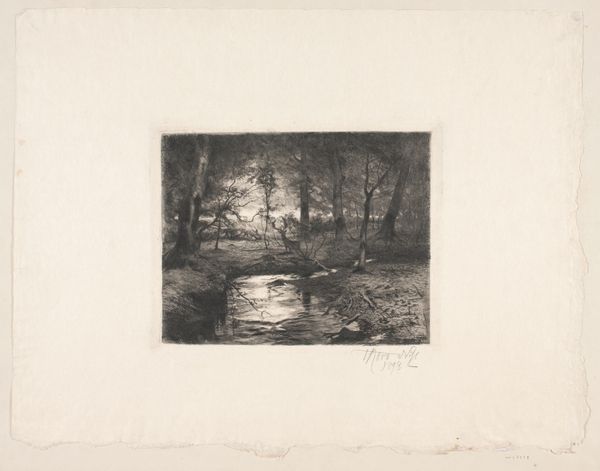
Dimensions: height 269 mm, width 350 mm
Copyright: Rijks Museum: Open Domain
Curator: Standing before us is “Plas in een bos,” or "Pond in a Forest," an etching by Adolf Carel Nunnink, dating back to somewhere between 1850 and 1865. It’s currently held in the Rijksmuseum. Editor: It's striking, isn’t it? The monochromatic tones create this hushed, almost solemn atmosphere. The way the trees frame the pond feels like looking into another world, a quiet refuge. Curator: Exactly. Consider the sociopolitical context. Romanticism in art was often a direct response to industrialization and urbanization. These artists sought solace in nature, an escape from the rapidly changing world. Nunnink, like many of his contemporaries, aimed to capture nature's unspoiled beauty, perhaps as a subtle critique of the societal shift. Editor: It also resonates with current themes, doesn’t it? Thinking about environmental concerns, our own desires to disconnect, seek restorative places. Are there suggestions of access here or does Nunnink’s work imply exclusion? Who do we imagine is experiencing this pond in a forest? Curator: The materiality contributes as well. Etchings like this were more accessible than paintings to a wider audience, democratizing art consumption. These prints circulated through society, spreading romantic ideals and shaping public perceptions of landscape. Editor: I also see something about identity in the deliberate artistic framing. The almost melancholic aesthetic perhaps mirrors our feelings regarding lost opportunities in accessing safe natural environments that promote relaxation. Curator: Precisely. Analyzing the style, we see elements typical of romantic landscapes - idealized compositions, sublime natural scenes, evoking feelings of awe and introspection. But also consider how the work participates in creating an art market, shaping ideas around landscape ownership, even cultural identity through its romantic lens. Editor: Ultimately, Nunnink presents us with a carefully crafted moment, asking us to reconsider our connection with nature and the worlds we wish to protect. Curator: It’s an invitation, surely, to reflect on the historical narratives woven into even the seemingly simplest of landscape scenes.
Comments
No comments
Be the first to comment and join the conversation on the ultimate creative platform.
